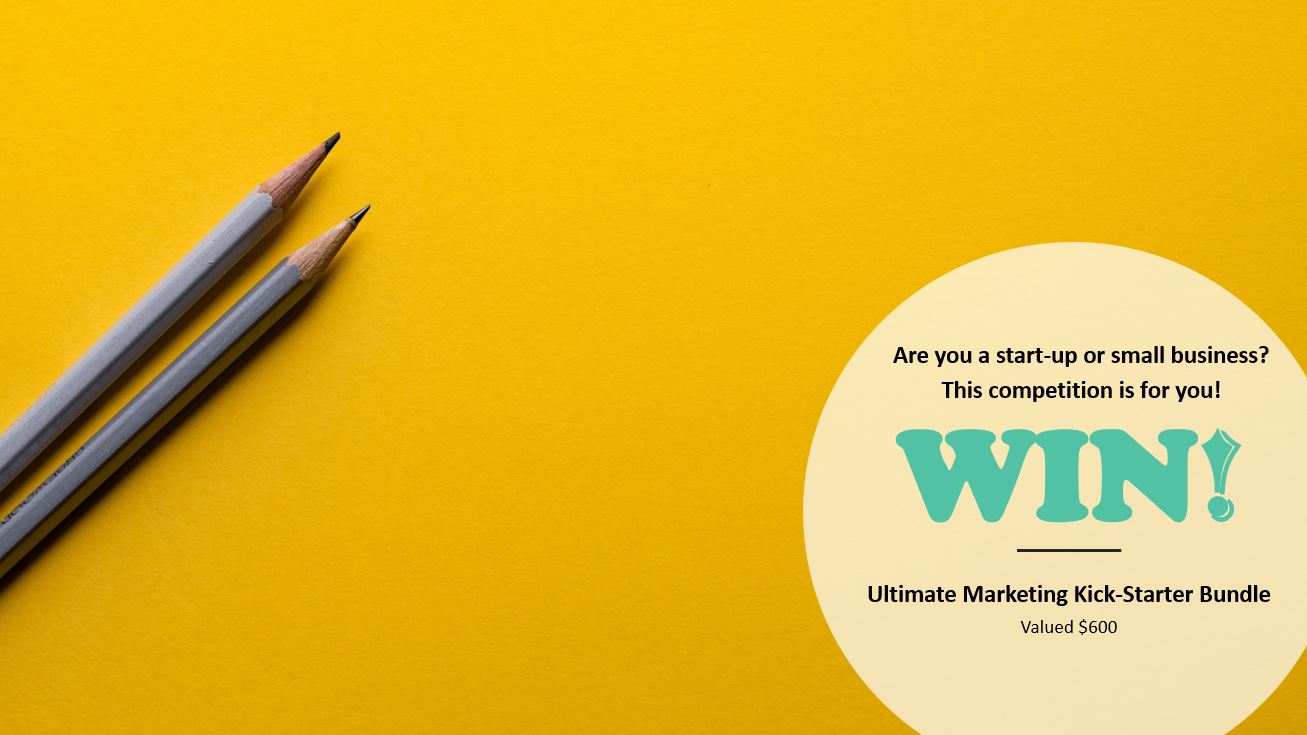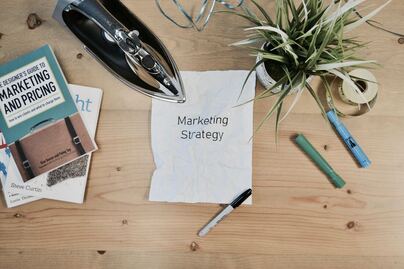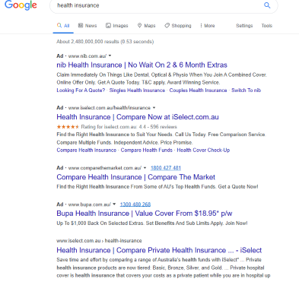|
When we first speak to small businesses about setting up a digital campaign or conduct a marketing audit we like to understand what the main action they want their customers to make and what they constitute a conversion.
So, what constitutes a conversion? A common misconception is that conversions are only sales, this isn’t necessarily correct. Conversions aren’t restricted to sales, it’s about getting potential customers to respond to your CTA (call-to-action) for instance completing a contact form, subscribing to your newsletter or downloading a whitepaper. Obviously, getting a sales conversion is the ultimate but in reality, it takes time for customers to interact with your company and brand before making the conscious decision to convert. This ties in with the three stages of the customer journey, which is frequently referred to as awareness, evaluation and conversion. Most of the time businesses talk highly about the amount of traffic landing on their website, which at first sounds impressive but what they fail to mention is what happens after that traffic has landed on their page. Sadly, they do nothing and when we look into the website analytics, we see that the bounce rates are extremely high. This is why we need to look closely at how these customers interacts with your brand and how to drive the them towards your CTA. When it comes to low conversion rate there are two obvious reasons that contribute to a high bounce rates on your website, including:
Below we highlight our top 3 strategies for getting your potential customers to click and convert: Know you customers Personalised marketing is something your customers expects. If you are trying to talk to everybody, you are not going to get qualified leads and most importantly little to no conversion. Your potential customers have needs and expectations, when you speak directly to the people you want to target, you are most likely to attract the right people and most likely they will want to interact with your brand and do business with you. Building buyer personas for your target market can help improve the way you interact with your potential customers and in many ways benefit you in all aspects of your marketing. Take some time to develop your buyer personas by establishing what best describes your typical customer and create a profile based on their demographics, values and challenges. A variety of potential customers will come to your homepage, so it needs to cater to every one of your buyer personas and this will allow you to craft your marketing campaigns and web design accordingly. Optimise your design It’s important that your website presents your business in a way that matches your expertise. Your websites homepage is the most visited page, it needs to be user friendly and provide a seamless experience. An eye-catching headline, nicely written copy, good visuals and a powerful CTA will stick in your potential customers minds. Create dedicated landing pages so that when your potential customers clicks on an ad for a specific product or service, they will see information about that product or service on the landing page. Another way to improve user experience is ensuring your acquisition forms are short and your CTA buttons are kept clear. These little tweaks can make a big difference to help users move forward to the next step and convert. Lastly, look at your data as this can give you a true representation of the good and the bad of your website and adjust your design accordingly. Test Test Test In order to track conversions, you need to set up your conversion tracking. At first your might think this sounds like a bunch of boring number crunching but it also allows you to do some experimenting with A/B testing. You can test anything from your website, online ads, emails and social media. So, where do you start? Google Analytics is one of the best testing tools, you can easily set this up and start looking at your website in more detail. You can create two variations of a single webpage and test the design, headlines, buttons and colours to determine which version converts more successfully. Headlines and CTA buttons are two powerful hooks which have the ability to make or break a conversion. Here are a couple of tips to think about: A headline is one of the first things that captures attention, so it’s important that you use the right wording and font to effectively grab their attention. Test different copy, as well as different text styles and text sizes to get the best results. An effective CTA button should give the user a sense of urgency, it needs to encourage you to act now or miss out. For example, a CTA button that says “Start Now” instead of “Start” may give a sense of urgency that makes your potential customer not want to avoid it. Where you place your call to action can have a huge effect, so test your CTA buttons above the fold, below the fold or on the left/right of the page.
0 Comments
 We have all been there, budget is tight, and we can only allocate a small portion of money to marketing. In reality, small business owners usually can’t afford the extravagant marketing budgets that larger businesses take for granted. The good news is that there are plenty of useful marketing methods that will produce results for your business without costing you a cent. Here are our top 5 effective ways to promote your business for free: Content marketing Start writing. Create a blog or write an article for your business, its free! There are many benefits of content marketing including brand visibility, creates a voice for your business, boost search engine ranking and client engagement. Consider yourself a blog-connoisseur? Writing your own blog is great, extend your reach by reaching out to your networks to get your blog promoted or start guest blogging so you can reach a broader audience. Make sure you research and understand your audience so that your content is relevant to them. Social media Social media is a powerful tool. An inexpensive way to utilise this platform includes posting content/photos, product promotions and giveaways. However, it can extend beyond the obvious and allow you to engage in conversational marketing which facilitates a one-to-one, real-time connection between your business and potential customers. Conversational marketing tactics like live chat and chatbots are relatively young, however regardless of industry or niche, conversational marketing will add the next level of service your customers seek. Partnerships Partnerships brings two company brands together. They are perfect for broadening scope, introducing new audiences and providing double the coverage. Try guest blogging, joint promotions, referral programs, collaborative special event/workshop appearances or a partner competition. When looking for a partnership, you need to align with a brand that delivers similar quality and most importantly will make sense to your business and to the consumer. Connecting with community Networking is crucial. A fast and effective way to promote your service or products is by finding a way to connect with your local community. Whether its serving on your community board or volunteering, you can build some strong relationships with locals that can actively influence and encourage organic discussion about your brand and business. Reach out to your local council or community centre and get more involved with the community activities, for example participate in trade fairs, sponsor a local event, advertise on a community board or get listed in your local publications. Ask for reviews Naturally, we all tend to share our experience with friends “the good, the bad”. There is no powerful tool than referral marketing and its 100% free. If you aren’t asking for reviews, you are missing opportunities. So how do you approach customers for a reviews post service? Firstly, just ask! You can’t be shy about asking for reviews, it pays to be proactive whether you provide a survey, sending a follow-up email or contacting your customer directly and requesting a testimonial. Remember most people willingly provide a review if asked, but very few do it on their own. To conclude, marketing is necessary if you want to grow your business, but most importantly survive. It doesn’t mean breaking the bank but does require you to be proactive in seeking, developing and distributing resources. Little Steps Digital and Sonia Eyles Copy have teamed up to give one lucky business all this:
TO ENTER: 1. Go to Facebook or Instagram and like this post 2. Tag your business name in the comments field 3. Follow us little_steps_digital and @sonia.eyles.copy Competition closes Thursday 27 February
If we look at the below Health Insurance example, the top four results are paid ads and appear at the top of the page above the organic listings which are influenced by SEO. The big question is can people tell the difference between paid and organic search results? The answer is yes and no. Around half are unable to recognise ads in Google's search results, some people surprisingly don't know the difference between paid and organic ads. Basically, this means that paid search in some perspective do work and worth the investment. However, PPC isn’t for everyone and based on your marketing goals and budget it is important to determine before leaping into a PPC campaign.
Let’s take a look at some advantages and disadvantages: SEO Advantages:
Disadvantages:
Advantages:
Disadvantages:
In conclusion, the common perception is that PPC costs money and it brings instant results, whereas SEO is free, but takes a long time. With so many companies competing for space in Google searches, your digital marketing needs to be strategic rather than throwing excessive money from your marketing budget to outbid other companies for ad space. The importance of a digital marketing strategy with defined short and long term goals are essential in making an SEO or PPC decision. Want to know more about PPC or SEO for your business? Get in touch with Little Steps Digital, we offer one on one consultation and SEO auditing services. |
Archives
April 2022
Categories |




 RSS Feed
RSS Feed
